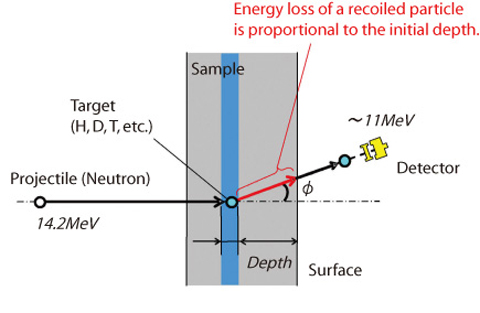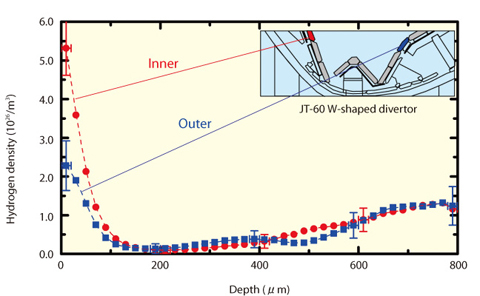
Fig.3-28 Principle of neutron elastic recoil detection analysis

Fig.3-29 Hydrogen depth profile of JT-60 from wall into the plasma
The surface of plasma-facing components (PFC) is eroded due to plasma-surface interaction in fusion devices. The dusts generated redeposits on the surface and forms layers of more than 100μm thickness in some areas. Since the redeposited layers contain hydrogen isotopes such as fuel deuterium (D) and tritium (T), their retention must be estimated for the design of plasma control, the safe management of tritium inventory, etc. Conventional analytical methods enable measurements of hydrogen isotope retention on PFC surfaces, but begin to have difficulty measuring in the depth range of 100?`1000μm.
We have developed Neutron Elastic Recoil Detection Analysis (NERDA) using a 14 MeV fast neutron beam produced by D + T fusion reaction to measure hydrogen isotopes in these deeper regions. This method is essentially based on the conventional elastic recoil detection analysis with an ion beam, which utilizes the elastic scattering between a projectile and target. In addition, the electrical neutrality of neutrons allows beam-induced degradation of hydrogen isotopes to be minimized because kinetic energy of neutron transfers to the substrate by nuclear interaction only, not by electronic interaction.
In the experiment, the energy spectrum of recoil charged particles from a sample irradiated by a neutron beam from the DT fusion neutron source is recorded. A response function including charged-particle transport in the sample and geometrical configuration of the experimental setup is calculated by a Monte Carlo method. A depth profile is computed from the spectrum numerically processed with this response function (Fig.3-28).
Hydrogen depth profiles of inner and outer baffle plates exposed to DD plasma in "JT-60" were measured as an application of NERDA. We could measure the profiles from the surface to 800μm (Fig.3-29). It is found that hydrogen is denser in the region of more than 200μm depth.
In future, we will apply NERDA to measurements of deuterium and tritium depth profiles for analysis of fusion reactor materials.